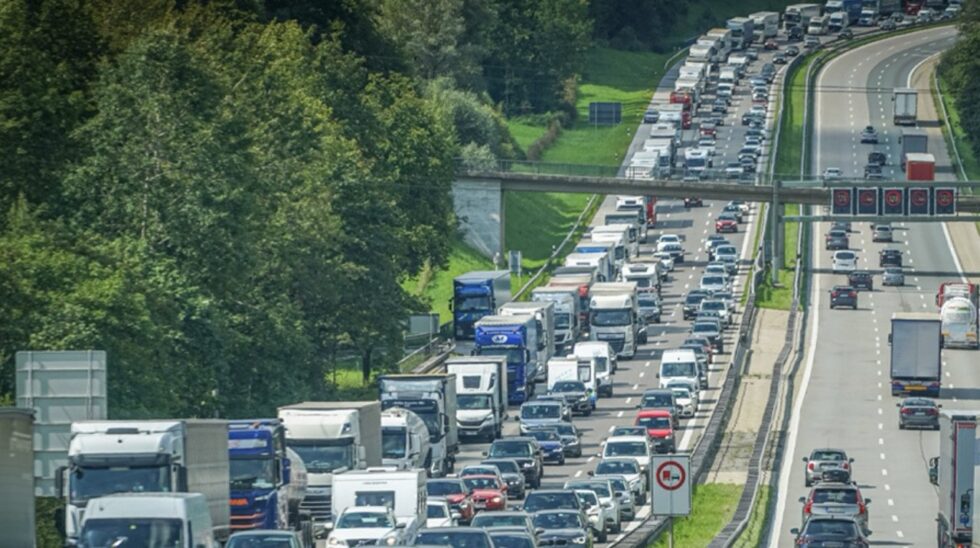Heavy traffic expected this weekend: Major congestion on Germany’s A3, A8 and A61

As school holidays begin in North Rhine-Westphalia (NRW), Germany is preparing for one of the most congested travel weekends of the summer. From July 12 to 14, 2025, heavy traffic is forecast nationwide, with bottlenecks expected on major highways including the A3, A8 and A61.
According to the latest traffic report by ADAC, more than 1,190 active construction zones, multiple full closures and return traffic from southern Europe will exacerbate the situation.
G.Business reports, based on ADAC data, on the key routes, closure points, peak times, legal requirements and tips to help drivers plan ahead.
Holiday rush: NRW joins nationwide vacation wave
The start of holidays in Germany’s most populous state, combined with existing breaks in other regions, will result in exceptionally heavy travel activity. Return traffic from Saxony, Saxony-Anhalt and Thuringia, as well as newly departing travelers from Hesse, Rhineland-Palatinate, Saarland and the southern Netherlands, are expected to intensify the congestion.
Holiday overview by region:
| State/Region | Holiday Status | Expected Impact |
|---|---|---|
| NRW | Holidays begin July 12 | Heavy outbound traffic |
| Hesse, Saarland | Mid-holiday period | Mixed direction traffic |
| Saxony, Saxony-Anhalt | 2nd week of holidays | Return traffic increases |
| Southern Netherlands | Start of holidays | High volume via A61, A3 |
Critical autobahns: Where it will jam first
The following highways are expected to be most affected:
- A3 – Cologne – Frankfurt – Nuremberg – Passau
- A8 – Karlsruhe – Stuttgart – Munich – Salzburg
- A61 – Mönchengladbach – Koblenz – Ludwigshafen
- A7 – Hamburg – Kassel – Würzburg – Füssen
- A9 – Berlin – Leipzig – Nuremberg – Munich
- A1 / A4 / Cologne Ring – local traffic bottlenecks
Full closures on key routes
Several full closures are planned over the weekend, making detours unavoidable:
| Highway | Closed Section | Dates |
|---|---|---|
| A5 | Darmstadt – Heidelberg (night closures) | July 13–15, 9 PM–5 AM |
| A6 | Mannheim – Hockenheim (both directions) | July 10–15 |
| A8 | Bernau – Frasdorf | July 11–12, 8 PM–5 AM |
| A44 | Düsseldorf – Essen | July 11–14 |
| A61 | Bergheim – Bedburg | July 11–13, 8 PM–5 AM |
Note: Additional short-term closures are possible and listed in the ADAC construction schedule.
When to avoid travel: Peak traffic times
| Day | Time of highest congestion |
|---|---|
| Friday | 1:00 PM – 8:00 PM |
| Saturday | 9:00 AM – 4:00 PM |
| Sunday | 12:00 PM – 8:00 PM |
Driving early in the morning or after 8:00 PM is recommended.
Delays at borders and abroad
Stretches in Austria, Switzerland, Italy and Czechia will also be overwhelmed by cross-border holiday traffic.
Key hotspots abroad:
- Brenner Autobahn (AT–IT): Ongoing bridge construction
- Gotthard Tunnel (CH): Capacity limits on weekends
- Tauern, Fernpass, Inntal routes (AT): High congestion, local exit bans
- D8 (Dresden–Prague): Tunnel repairs
- Border crossings: Walserberg (A8), Kiefersfelden (A93), Suben (A3), Pomellen (A11), Frankfurt/Oder (A12)
Traffic stress is real – how to stay calm
Long waits in heat, combined with time pressure, are mentally exhausting for families, the elderly, and solo drivers. To reduce stress:
- Take breaks every 2 hours
- Bring plenty of water and snacks
- Use calm music or audiobooks
- Set realistic time expectations
Psychologists warn that sudden lane changes, road rage or constant checking of arrival time only worsen the travel experience.
Laws, fines, and emergency lanes: What to know
- Emergency lanes (Rettungsgasse) must be formed as soon as traffic slows, not just when blue lights appear.
- Fines for blocking emergency lanes: up to €320 and 2 points
- Speeding fines: from €70 and 1 point (21 km/h over limit) up to €240 and a one-month ban in work zones
- Truck ban: Saturdays 7 AM–8 PM on all major routes for vehicles over 7.5 t (July–August)
Final tips: Safe and strategic travel
Despite the challenging outlook, smart planning helps reduce stress and delays:
- Avoid peak hours
- Use apps (ADAC Maps, Google Maps, NUNAV)
- Travel early morning or late evening
- Maintain a steady speed around 100–120 km/h — more efficient than speeding and braking
Stay connected for news that works — timely, factual, and free from opinion — and insights that matter now: Trump Signs Sweeping “One Big Beautiful Bill” into Law – Historic Tax Cuts and Spending Shifts Unleashed
©imago images/Steinsiek.ch